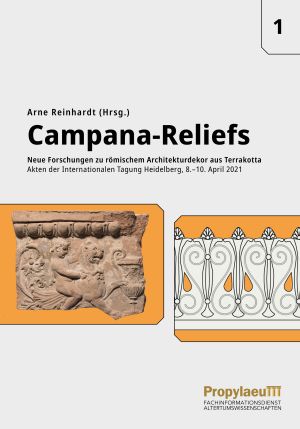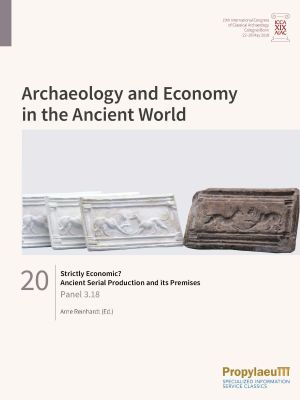Reinhardt, Arne
Campana-Reliefs: Neue Forschungen zu römischem Architekturdekor aus Terrakotta: Akten der Internationalen Tagung in Heidelberg, 8.–10. April 2021
Architectural terracottas are typical of many Roman buildings from the Republic to the early Imperial period. Rich in imagery and colour, these terracottas adorned private and public buildings of the elite.
In spite of their broad use in Antiquity, modern research on this aspect of Roman architecture and cultural history is relatively scattered and often concentrates on the same aspects. For the first time, this volume gathers new international and interdisciplinary research on the topic, thus mapping out the current state of knowledge and at the same time introducing interesting perspectives for the future. Its sixteen contributions cover a broad range of topics, including the genesis and morphology of the genre, its imagery and polychromy, as well as the history of reception and collecting.
Strictly Economic? Ancient Serial Production and its Premises: Panel 3.18
The complex subject of production and consumption in antiquity has been attracting growing interest in Classical Archaeology for some time. Research with an economic perspective, such as the investigation of the dynamics of the production of objects or ornaments in Antiquity, has opened up new insights into Greco-Roman culture. Against this background, the present volume focuses on a particular method of production: serial production. On the basis of close-up observations of the finds, the authors of the volume illuminate the broad spectrum of ancient serial production in Greece and Rome in exemplary fashion; the examples deal with a range from (late) Classical ceramics with painted decoration to mechanically reproduced coins and relief tableware to luxurious marble urns. The aim is first describing individual series and defining them and subsequently using this information to interpret the respective conditions that led to the series. This process demonstrates that the phenomenon of serial production (and seriality more generally) consistently transcends economic aspects and seamlessly leads over into other areas of ancient cultural history and its research.








